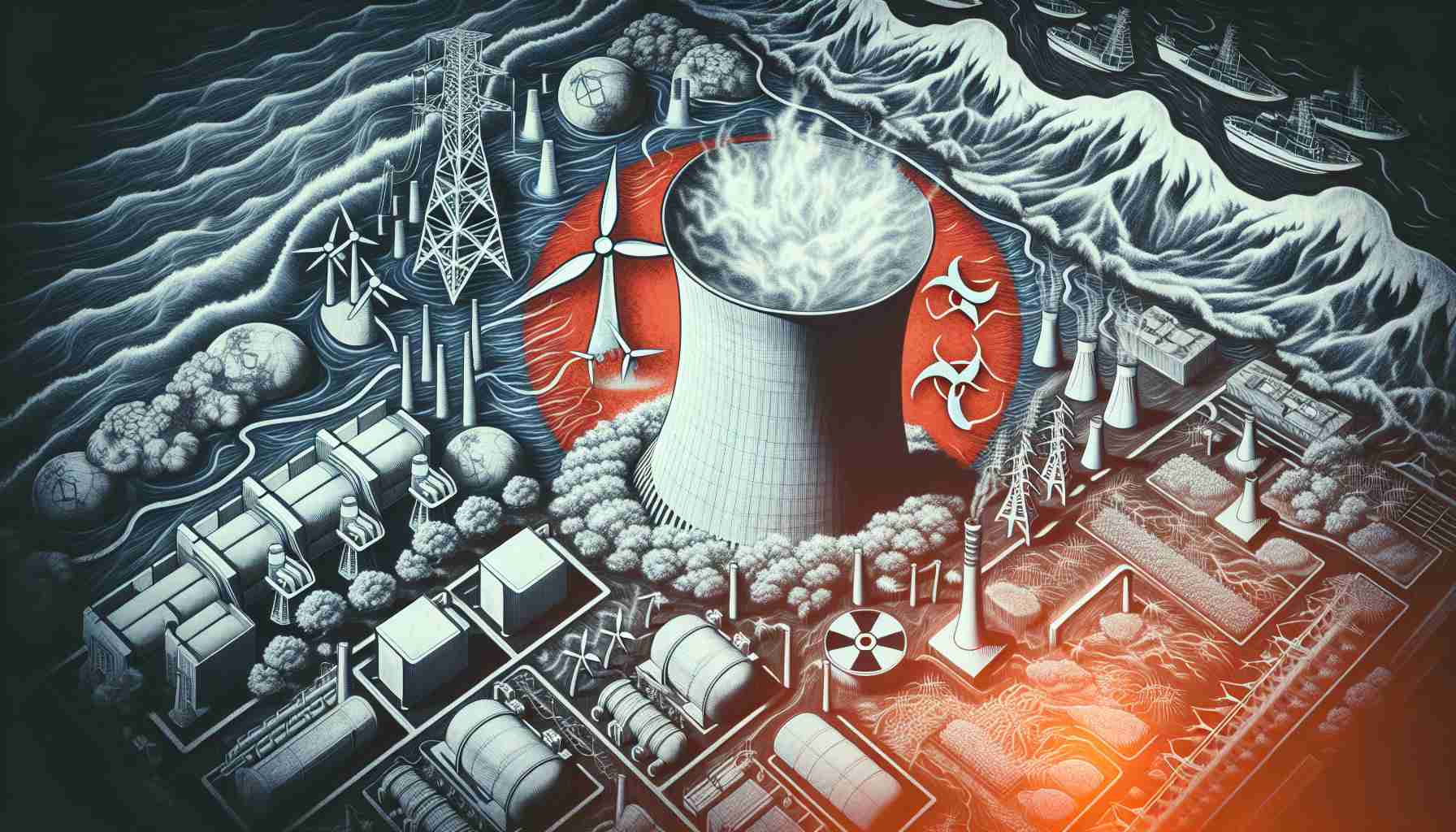Japan’s energy landscape is changing dramatically. After over a decade of skepticism, the nation is turning back to nuclear power.
In a significant pivot, Japan is re-embracing nuclear energy, years after the devastating Fukushima Daiichi disaster. The draft for the latest Strategic Energy Plan, poised for approval by Prime Minister Shigeru Ishiba’s Cabinet, marks a clear departure from previous commitments to minimize reliance on nuclear energy.
The proposed strategy calls for the restart of previously shuttered nuclear plants and contemplates the construction of new reactors for the first time since the catastrophic incident in 2011. This move comes amid rising global energy security concerns and a pressing need to stabilize Japan’s energy supply, which currently relies heavily on fossil fuels.
With Japan’s energy self-sufficiency hovering at a mere 15.2%, the new plan advocates for a diverse energy portfolio. It highlights the reliability of nuclear power, contrasting it with the intermittency of renewable sources like wind and solar. The blueprint predicts that by 2040, nuclear energy will constitute 20% of Japan’s energy mix, while renewables will grow to comprise 40-50%.
Critics express unease about Japan’s continued reliance on fossil fuels, urging a greater commitment to harnessing renewable energy. Experts argue that Japan’s capacity for renewables remains largely untapped, advocating for a more ambitious decarbonization strategy to meet global standards. Despite the challenges, the looming question is how efficiently Japan will balance these energy sources moving forward.
Japan’s Nuclear Renaissance: A New Era in Energy Strategy
Japan’s energy landscape is undergoing a significant transformation as the country pivots back to nuclear power, a strategic shift following more than a decade of caution after the Fukushima Daiichi disaster. This shift is underscored by the new draft of the Strategic Energy Plan, which is set to receive approval from Prime Minister Shigeru Ishiba’s Cabinet.
Overview of Japan’s Energy Strategy
The draft plan signals a decisive intent to restart nuclear reactors that were previously taken offline and even explore the construction of new facilities. This marks the first consideration of new nuclear plants since the 2011 disaster, which profoundly affected public perception and policy regarding nuclear energy in Japan.
Energy Self-Sufficiency and Diversification
Currently, Japan’s energy self-sufficiency stands at a precarious 15.2%, highlighting the critical need for energy diversification. The proposed energy strategy aims to bolster Japan’s energy security by expanding its energy portfolio beyond its traditional reliance on fossil fuels. Nuclear power is seen as a stable complement to renewable energy sources, which, while increasingly important, have been criticized for their intermittent nature.
By 2040, the plan anticipates nuclear energy contributing approximately 20% of the nation’s energy mix, while renewables are projected to account for an ambitious 40-50%. This dual approach intends to address both security concerns and environmental targets.
Pros and Cons of Nuclear Energy in Japan
Pros:
– Energy Stability: Nuclear power can provide a consistent energy supply, reducing dependence on fossil fuels and enhancing energy security.
– Lower Carbon Emissions: The use of nuclear energy can significantly decrease Japan’s carbon footprint, helping combat climate change.
– Technological Innovations: Japan has a robust history of technological advancements in nuclear safety, which could bolster confidence in a new generation of reactors.
Cons:
– Public Skepticism: The legacy of Fukushima continues to create distrust among the population regarding nuclear safety.
– Waste Management Issues: The storage and management of nuclear waste remain unresolved challenges.
– High Costs: The financial implications of restarting old reactors and building new ones can be substantial and may impact energy costs for consumers.
Future Directions and Challenges
The path ahead is fraught with challenges. Critics of the new strategy express concern over the continued dependence on fossil fuels and the perceived insufficient commitment to ramping up renewable energy sources. Experts argue that Japan’s renewable energy capabilities are still largely underutilized, suggesting that there is substantial potential for growth in solar, wind, and other renewable technologies.
Market Insights and Trends
As Japan restructures its energy strategy, global trends also play a crucial role. With energy security becoming a paramount concern internationally, many nations are reassessing their own energy policies. Japan’s renewed focus on nuclear power could have ripple effects on the global energy market, influencing trends in energy prices and international energy cooperation.
Conclusion
Japan’s return to nuclear energy represents both a challenge and an opportunity. The country must find a delicate balance between ensuring energy security, adhering to environmental commitments, and addressing public concerns over nuclear safety. As the world moves toward more sustainable energy systems, Japan’s approach may set significant precedents in how nations navigate energy transitions in the 21st century.
For more insights on Japan’s energy policies and future developments, visit the Japan Times.
The source of the article is from the blog be3.sk



